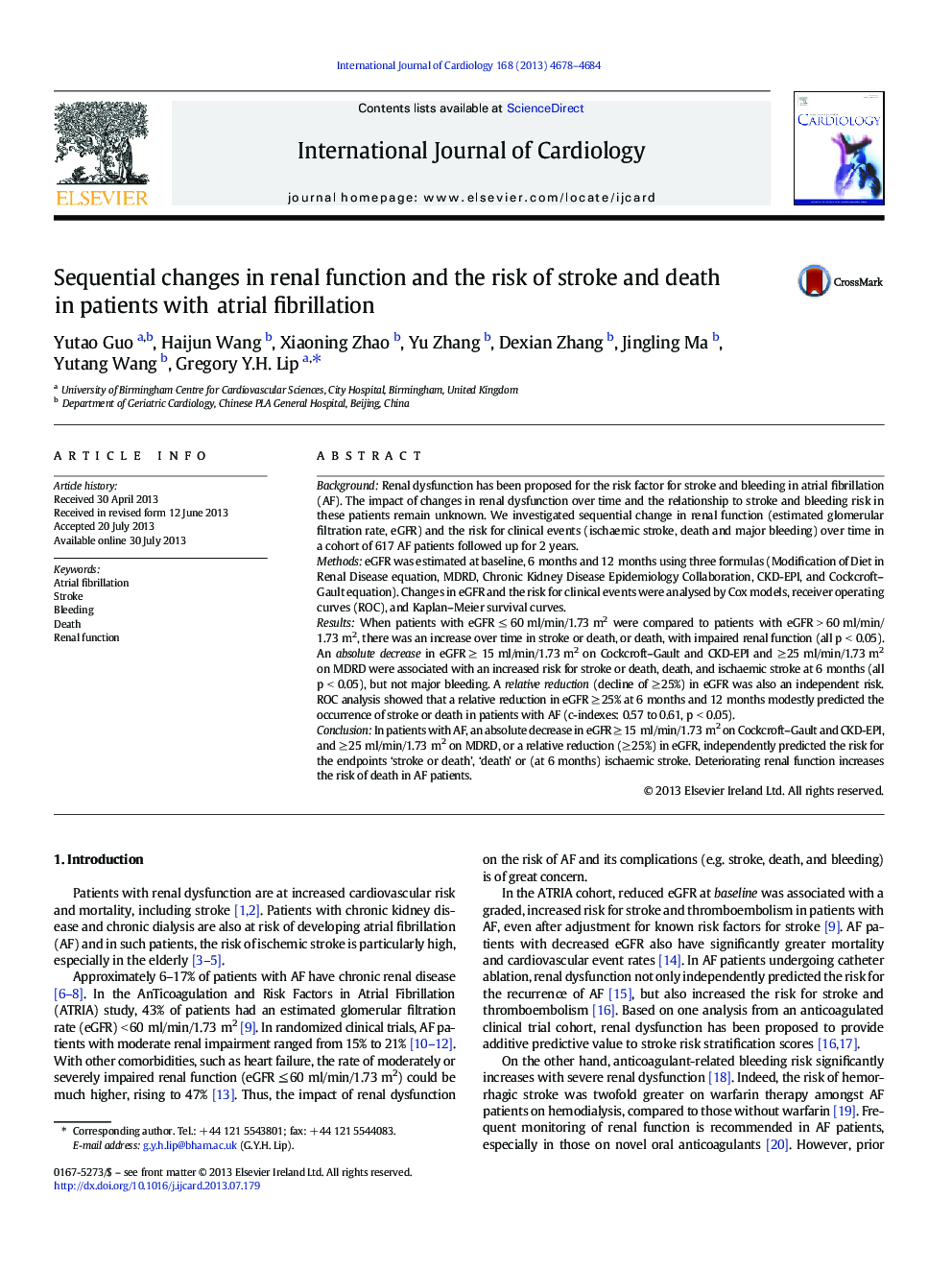| Article ID | Journal | Published Year | Pages | File Type |
|---|---|---|---|---|
| 5973345 | International Journal of Cardiology | 2013 | 7 Pages |
BackgroundRenal dysfunction has been proposed for the risk factor for stroke and bleeding in atrial fibrillation (AF). The impact of changes in renal dysfunction over time and the relationship to stroke and bleeding risk in these patients remain unknown. We investigated sequential change in renal function (estimated glomerular filtration rate, eGFR) and the risk for clinical events (ischaemic stroke, death and major bleeding) over time in a cohort of 617 AF patients followed up for 2 years.MethodseGFR was estimated at baseline, 6 months and 12 months using three formulas (Modification of Diet in Renal Disease equation, MDRD, Chronic Kidney Disease Epidemiology Collaboration, CKD-EPI, and Cockcroft-Gault equation). Changes in eGFR and the risk for clinical events were analysed by Cox models, receiver operating curves (ROC), and Kaplan-Meier survival curves.ResultsWhen patients with eGFR â¤Â 60 ml/min/1.73 m2 were compared to patients with eGFR > 60 ml/min/1.73 m2, there was an increase over time in stroke or death, or death, with impaired renal function (all p < 0.05). An absolute decrease in eGFR â¥Â 15 ml/min/1.73 m2 on Cockcroft-Gault and CKD-EPI and â¥Â 25 ml/min/1.73 m2 on MDRD were associated with an increased risk for stroke or death, death, and ischaemic stroke at 6 months (all p < 0.05), but not major bleeding. A relative reduction (decline of â¥Â 25%) in eGFR was also an independent risk. ROC analysis showed that a relative reduction in eGFR â¥Â 25% at 6 months and 12 months modestly predicted the occurrence of stroke or death in patients with AF (c-indexes: 0.57 to 0.61, p < 0.05).ConclusionIn patients with AF, an absolute decrease in eGFR â¥Â 15 ml/min/1.73 m2 on Cockcroft-Gault and CKD-EPI, and â¥Â 25 ml/min/1.73 m2 on MDRD, or a relative reduction (â¥Â 25%) in eGFR, independently predicted the risk for the endpoints 'stroke or death', 'death' or (at 6 months) ischaemic stroke. Deteriorating renal function increases the risk of death in AF patients.
